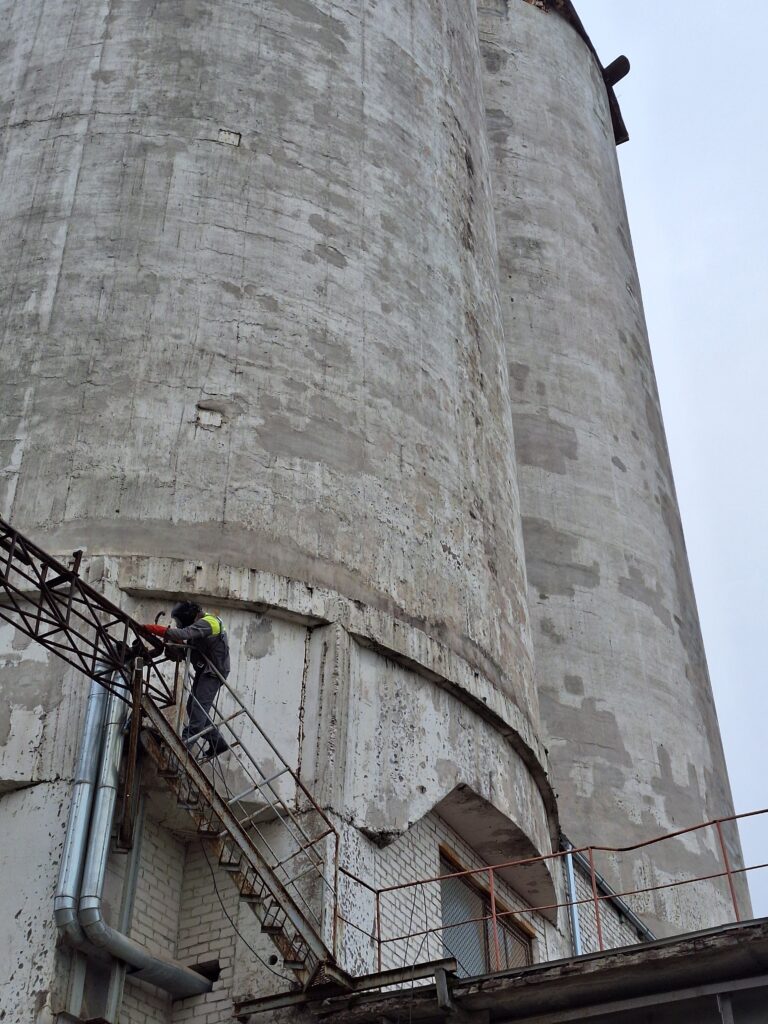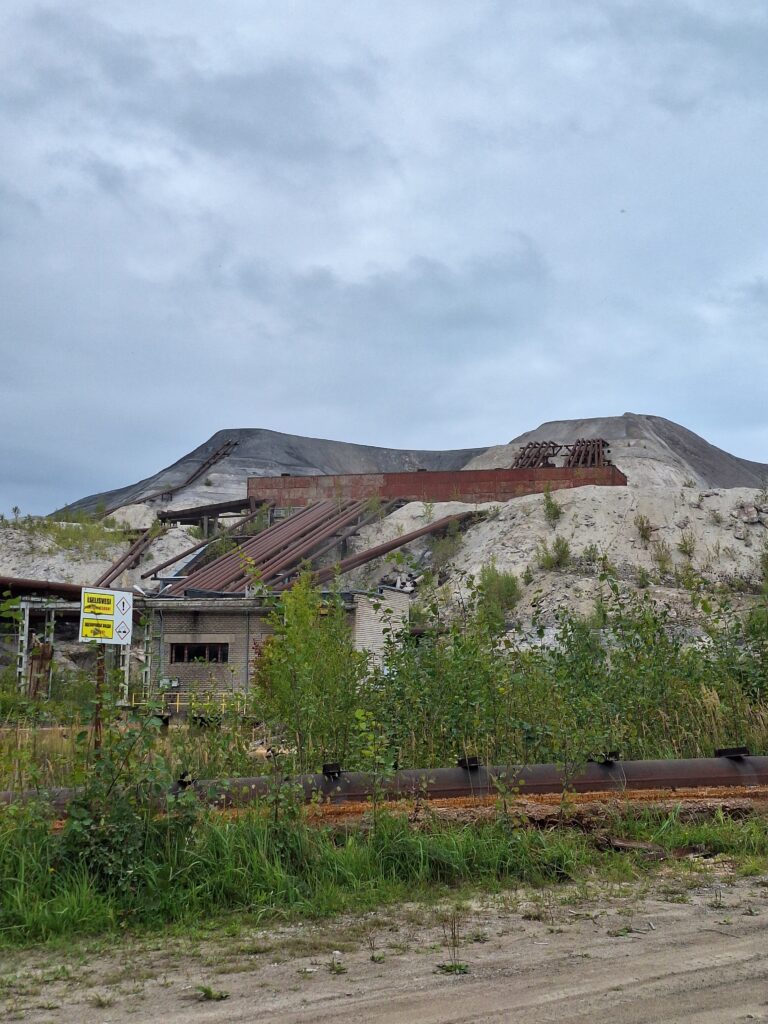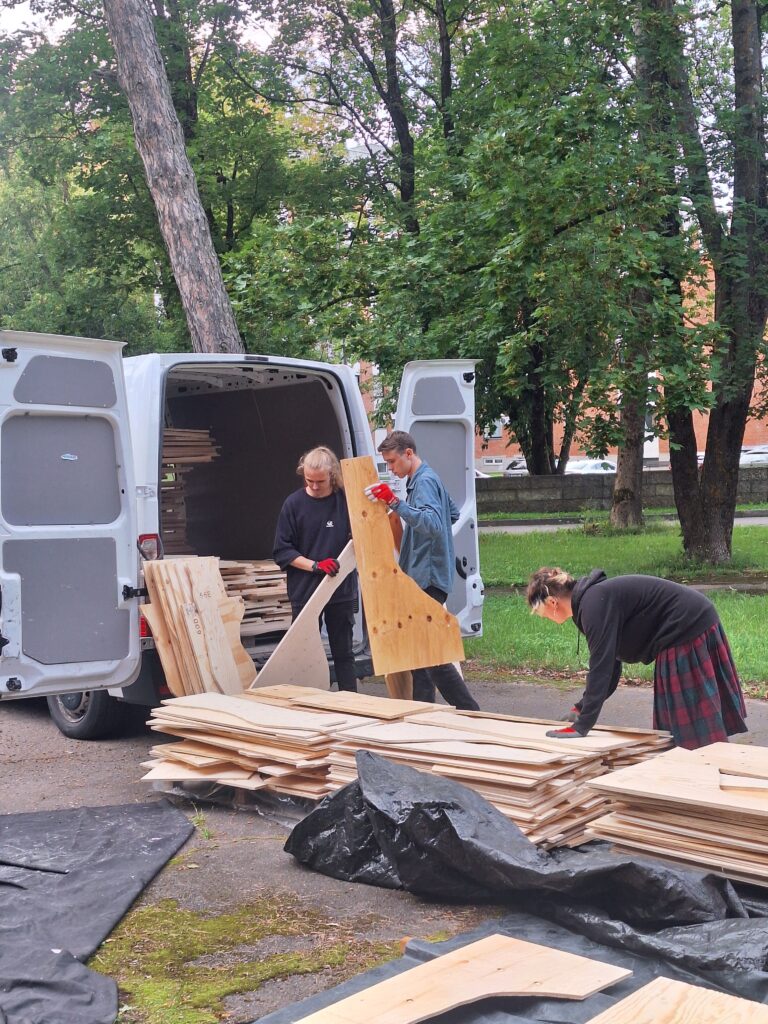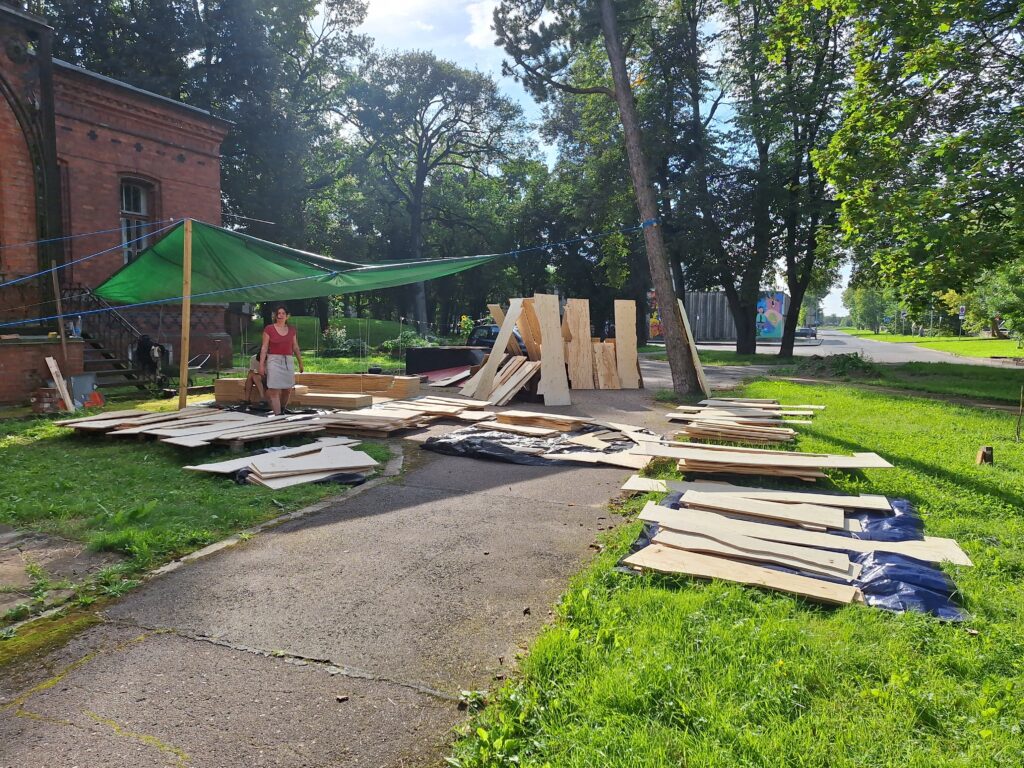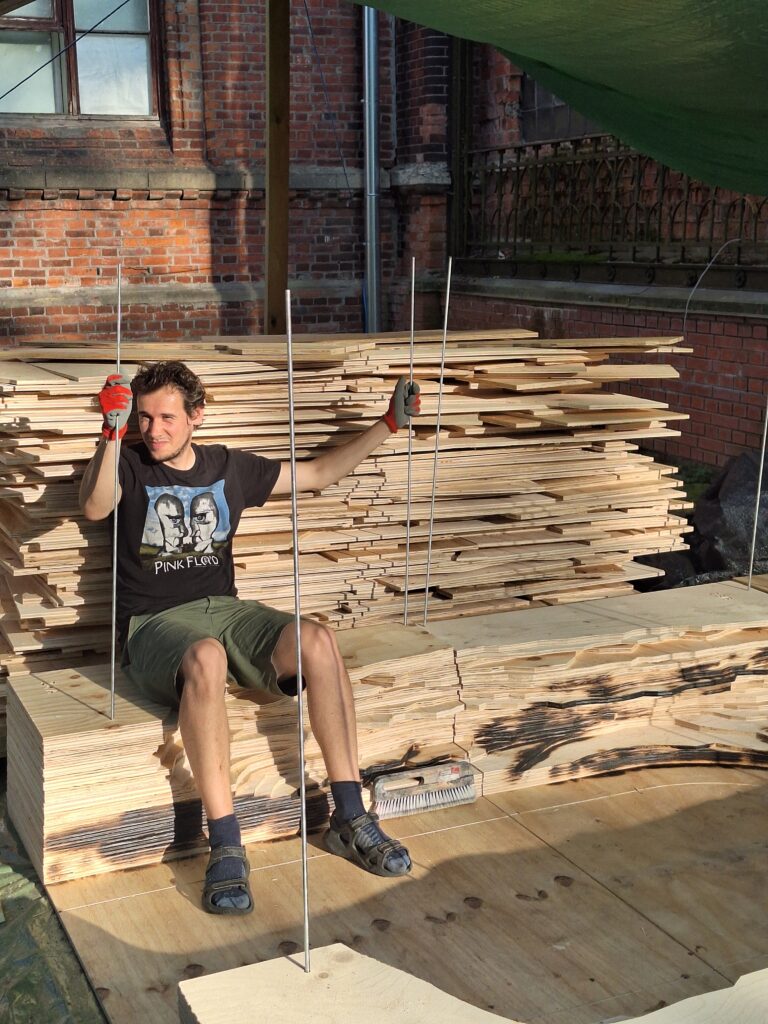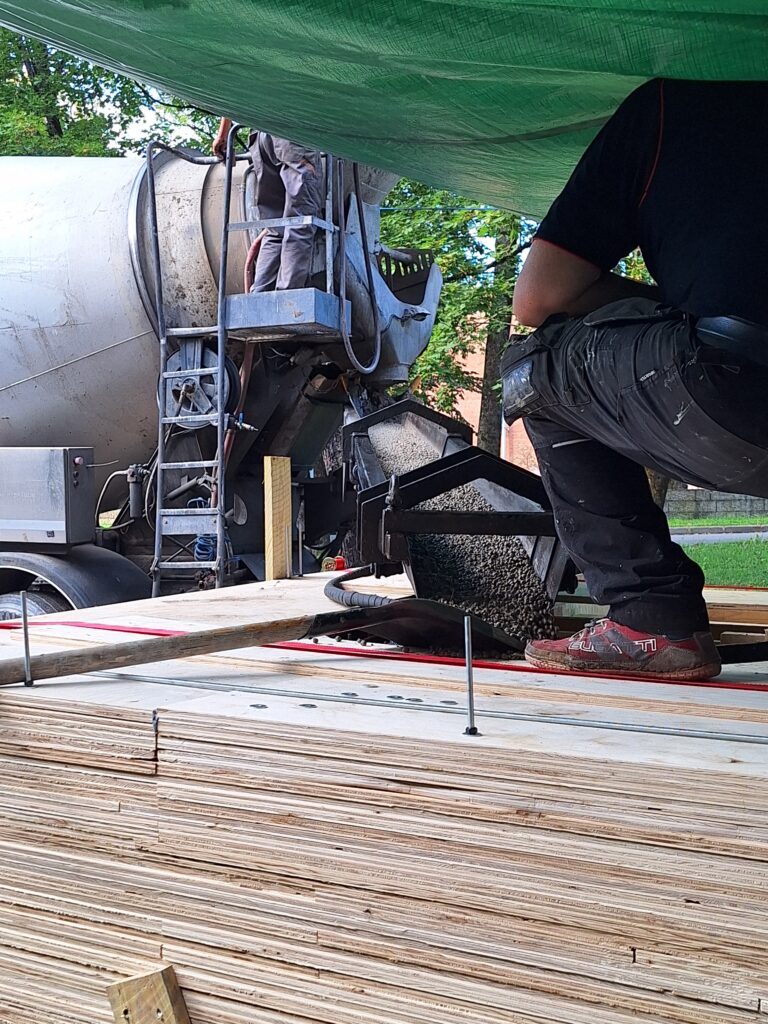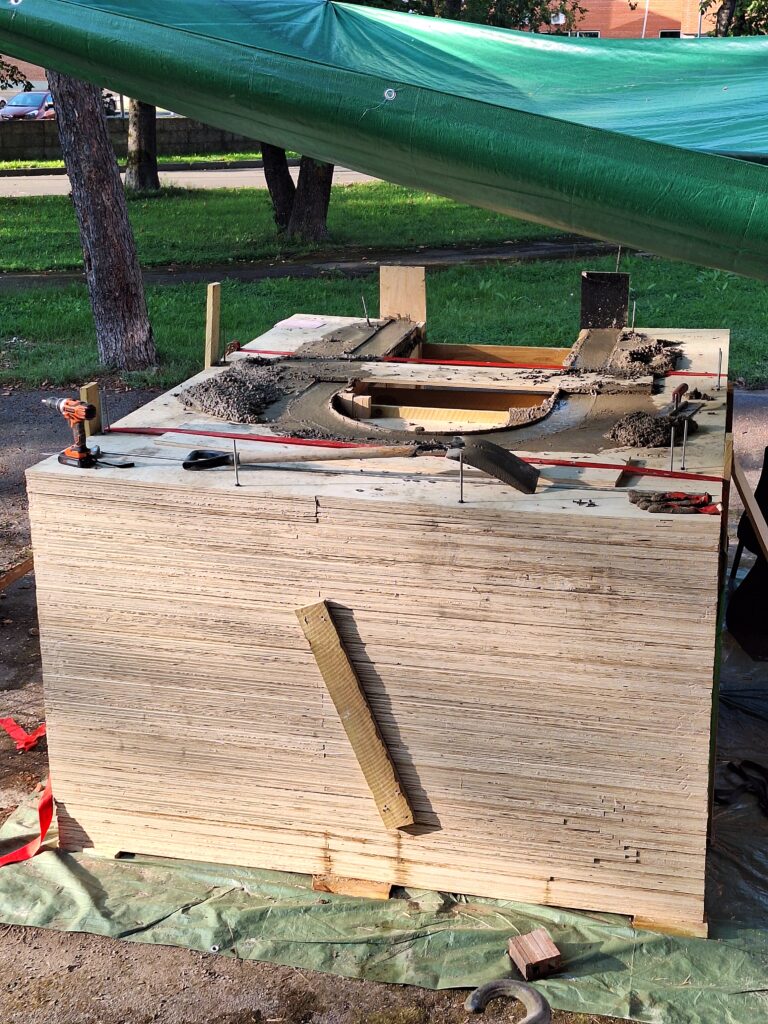NAIR x TAB 2024, Installation, Satellite Event
“Tuhast” installation
26.10
The winner of the Narva Urban Installation Residency (NAIR) Competition is Tuhast (Eng. “From the Ashes”) by Augustas Lapinskas. Their installation materialises Ida Virumaa’s transition from its industrial past towards its future as a regional beacon of circular economy and ecological revitalization, drawing inspiration from the stratified layers of oil shale, the material emblem of the region, and the recent innovations that made plans to reuse Oil Shale Ash (OSA) waste possible.
Installation opening is on the 26th of October at the Dark Garden, Narva.
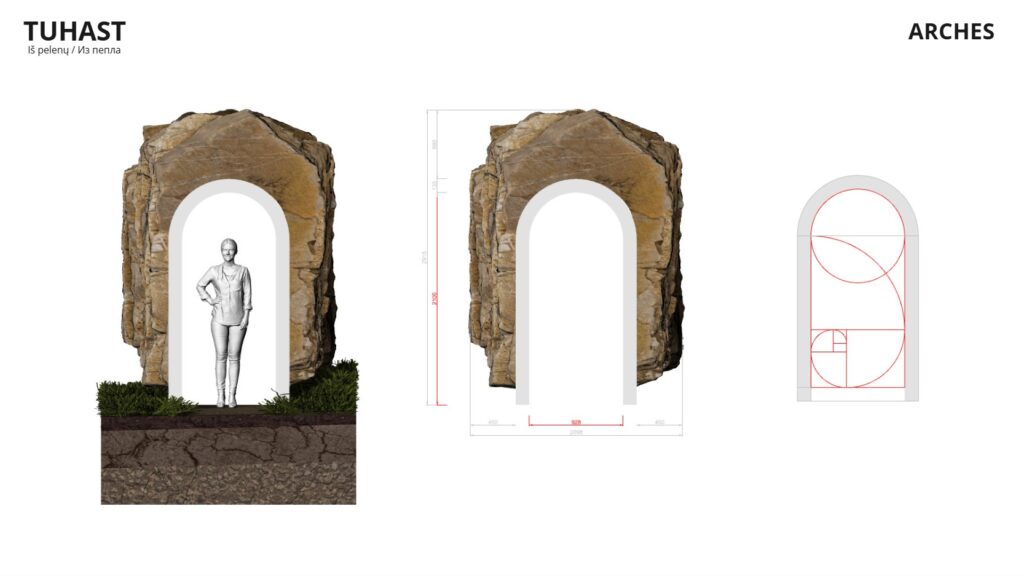
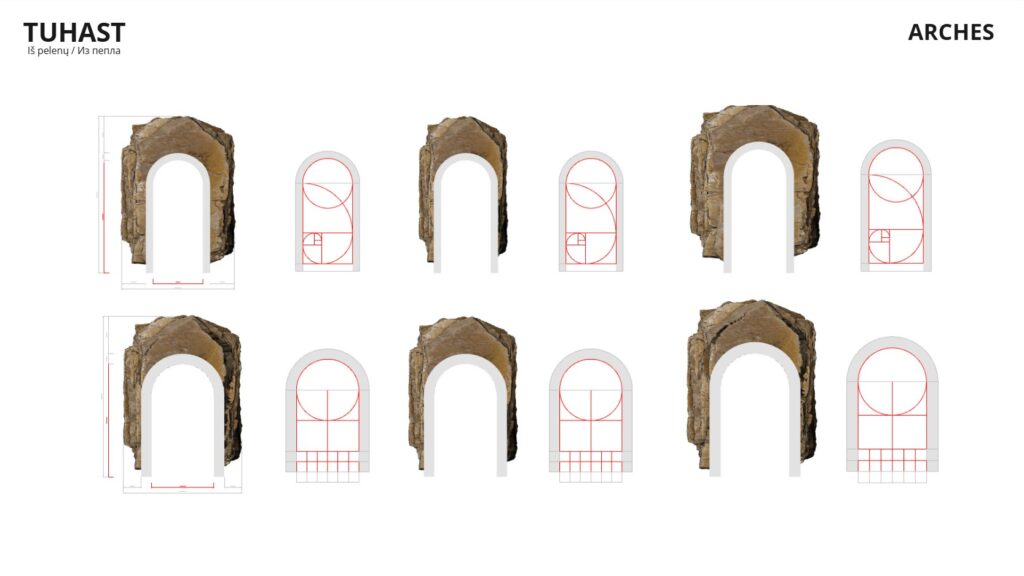
During the period of the residency, the author explores the use of bio-receptive OSA concrete — a pioneering state-of-art material that amalgamates oil shale ash with traditional cement, while experimenting with novel concrete-casting techniques to recreate form and texture of shale-rock formation. As a part of the public program, the artist organised a series of presentations and workshops, engaging the local community and visiting students to explore the themes of urban ecology and sustainable materials, fostering a practical understanding of the environmental and social impact of industry.
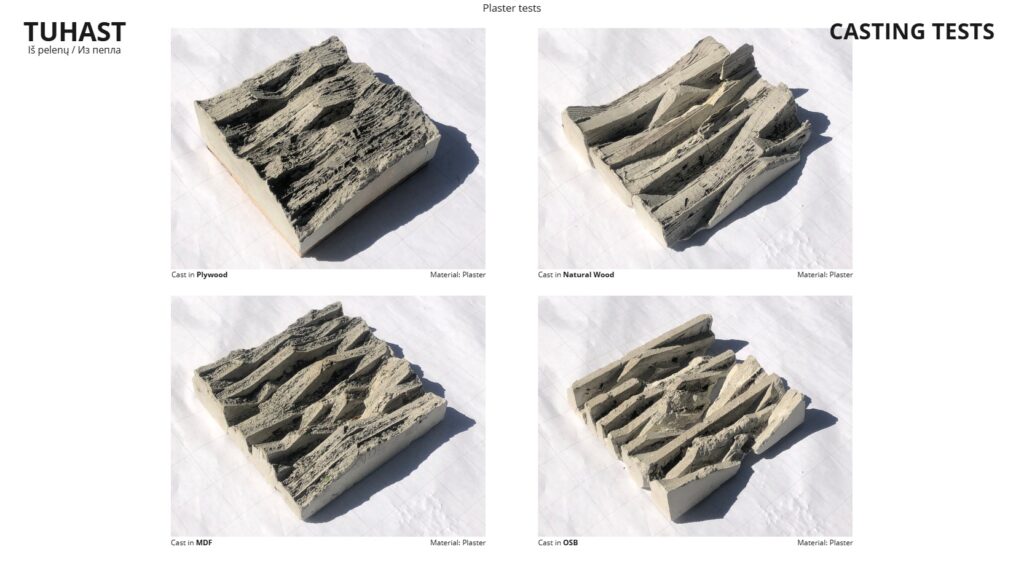
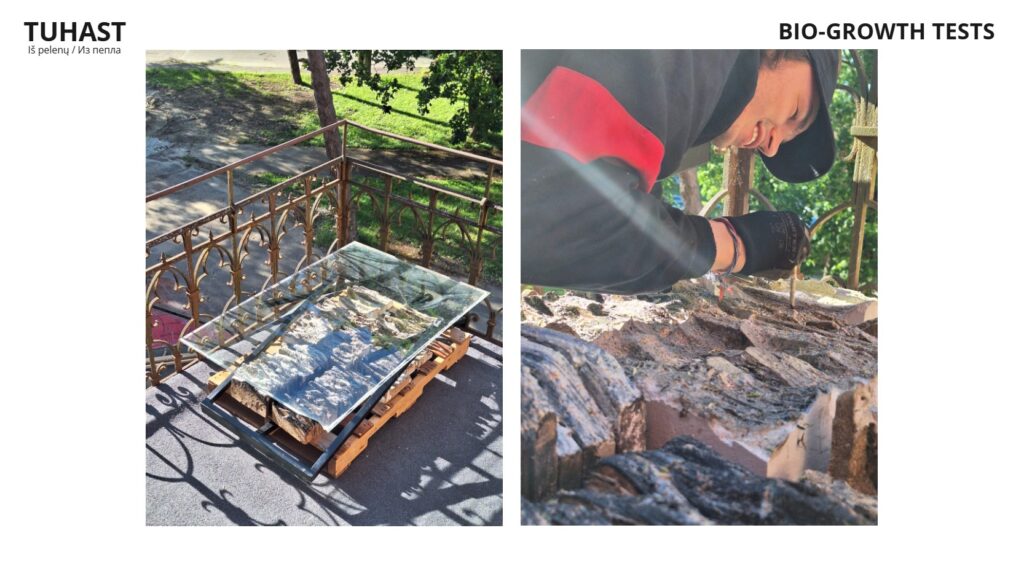
Tuhast will be opened to the public in October 2024, as a 3-metre-tall arch portal, inviting to walk through a symbolic threshold that marks a transformative point in time for the region. Designed to support biofilm growth, the piece will display the development of a local living ecosystem on its surface, symbolising the transition of oil shale ash industry to a green power that will help to fight the climate crisis and mitigate the negative impact of concrete in the region and beyond.
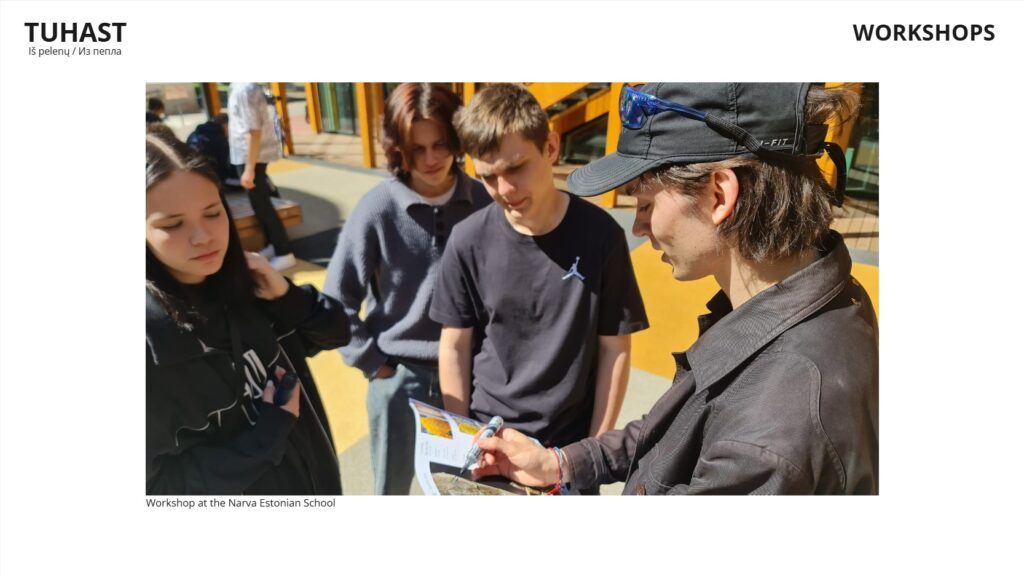
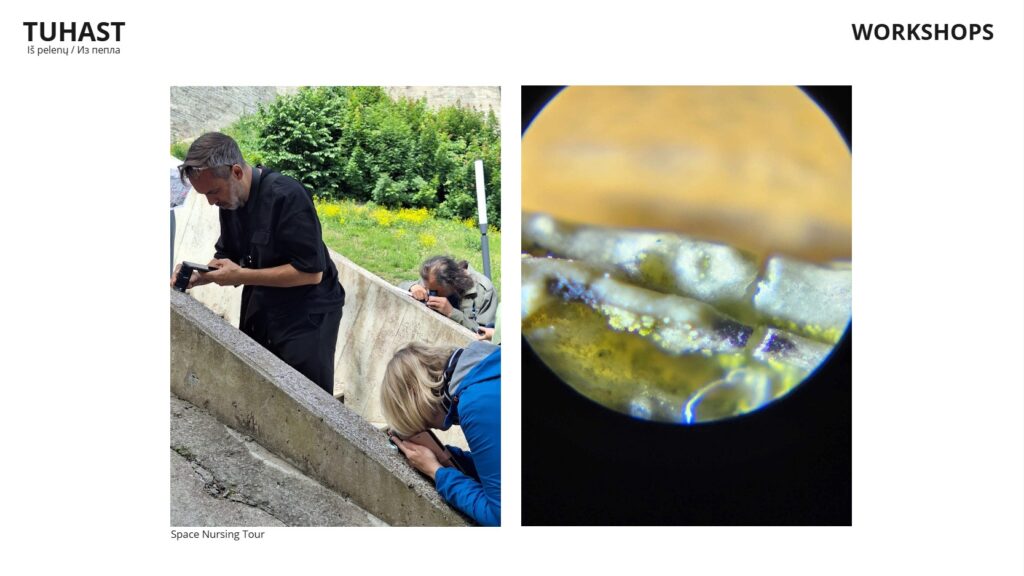
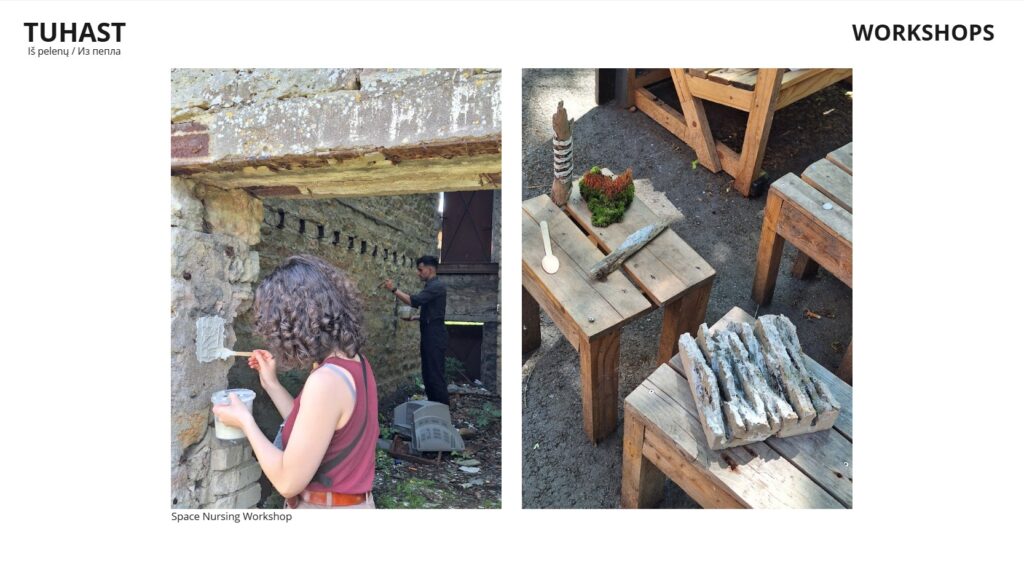
Augustas Lapinskas is actively engaged in artistic research and interdisciplinary collaborations, has co-founded the interdisciplinary art collective micro-empathy, and is a member of the speculative architecture group 3022.
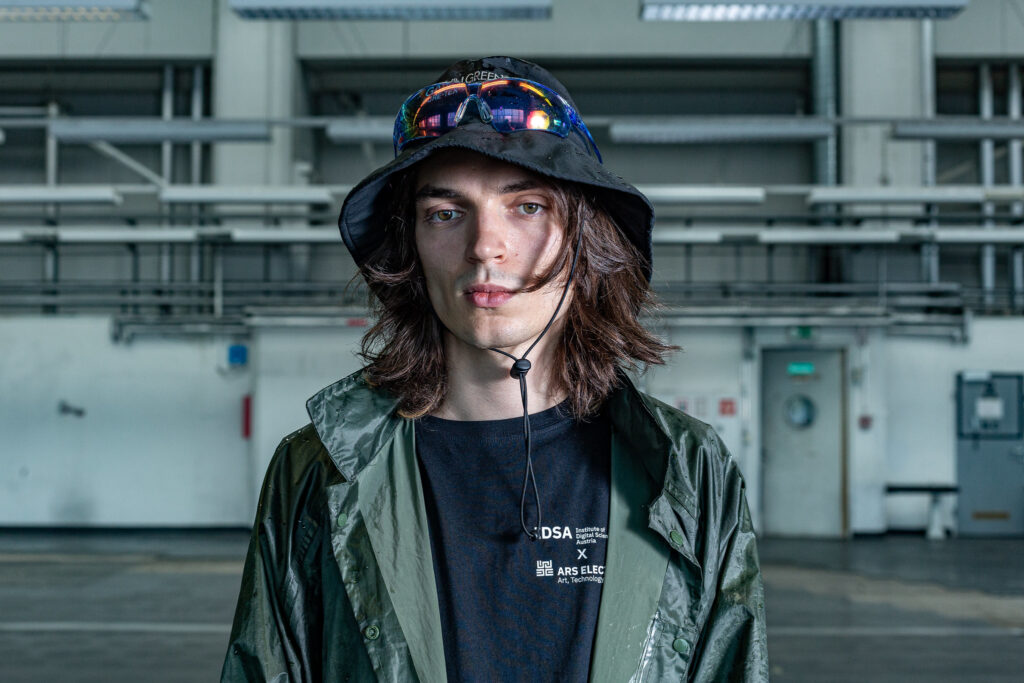
Photo: Patrick Münnich
The project is a part of TAB 2024 Satellite program, administered by Narva Art Residency, and is supported by Narva Municipality, Estonian Cultural Endowment, Estonian Ministry of Culture, and Lithuanian Council for Culture. Installation production partners: 3DKoda OÜ, Decora AS, Enefit, Ehituse ABC, Uus Saam Grupp and D&M BALKANSKI OÜ with the assistance of Tatjana Štšurikova, Marius Lukošiūnas and Lyly Letzer, Delija Thakur, Ditiya Ferdous, Algis Sprindžiūnas. Project friends: Kohtla-Järve Museum of Oil Shale, Ragn-Sells AS.
Production of the installation
The “Tuhast” installation, conceptualized by Augustas Lapinskas, and heralding Ida Virumaa’s shift from an industrial past to a sustainable future, is now progressing through its production phase, utilizing innovative techniques and material to produce a pioneering public art piece that symbolizes ecological revitalization of the region.The centerpiece of the installation is a monolithic arch, cast in a single casting mould, which was assembled out of over 500 carefully designed pieces.
The production of “Tuhast” faced two distinctive challenges, which required extensive research, collaboration and experimentation. The first challenge was the production of the casting mould, which is meant to reproduce the exterior form of a shale-rock formation. Inspired by the works and experimentation of Maya Lin, A. Labašauskas, P. Zumthor and Walter Jack, Augustas Lapinskas proposed a novel casting technique which was tested and developed through experimentation at Narva Art Residency, with technical assistance of A. Sprindžiūnas.While it is a commonly used technique in architecture to use wooden casting moulds for concrete to achieve a wood-like texture, Lapinskas’ process makes a significant departure. In this case, varying shapes cut out of plywood sheets were stacked, assembled, and finally burned to create a highly detailed distressed surface. The resulting wooden cast mimics the organic cracked shardlike texture of shale-rock.
The second challenge was to formulate an experimental ultra-lightweight concrete mix, which would utilize both bio-receptive and pozzolanic properties of Oil Shale Ash (OSA). This bioreceptive OSA concrete mix was inspired by the material science research conducted at Tallinn University of Technology, University of Tartu and Delft University of Technology. Due to limited resources, the new formula could not be tested in a laboratory environment, therefore the formulation required multiple consultations with material providers, scientists, concrete mixing and casting specialists, which took more than three months and significantly delayed the production schedule. More than fifteen variations of the formula were proposed until one was identified as the most effective and reliable. Once these challenges were resolved, the production process was able to proceed.
The project was meant to ride on the ridge with all the experimentation, uncertainty, responsibility, and it did. At least two occasions required invention to move forward. So much help and support we have received, it would have not been possible without the people who joined and contributed along the way. There are the last few responsible tasks ahead of us but all the leaps are in the past. All I want is that the locals, who I got to talk to while working on-site, would get to experience it and act-out the imaginaries they shared – to climb it, to greet the sun by it, to throw a party there. We were mindful of the lively attitude and we tried to produce the installation sturdy and safe to withstand the vigour of this place, which I adore. It is public art and I hope it integrates.
– Augustas Lapinskas
